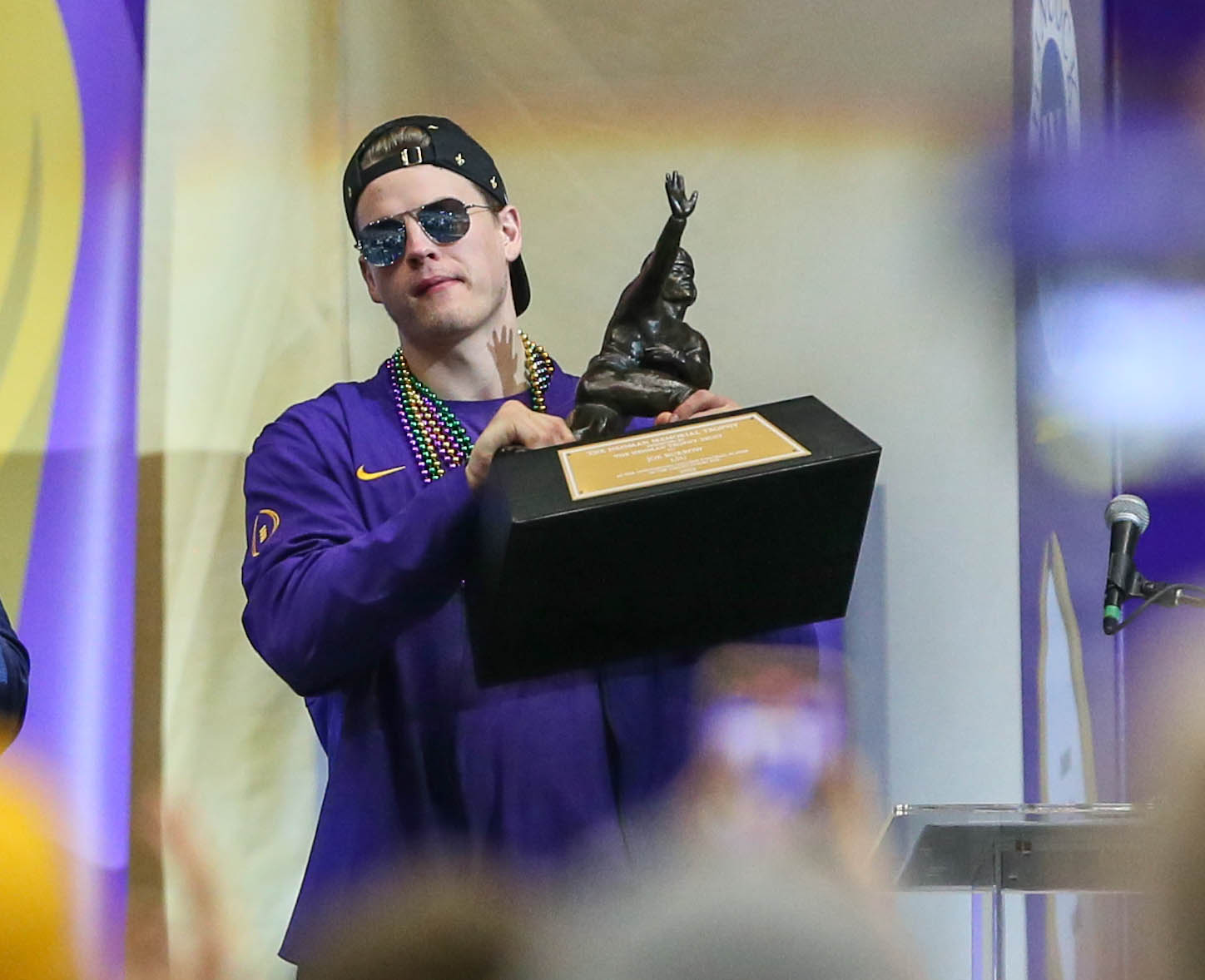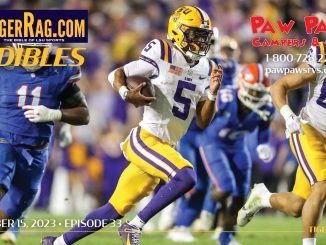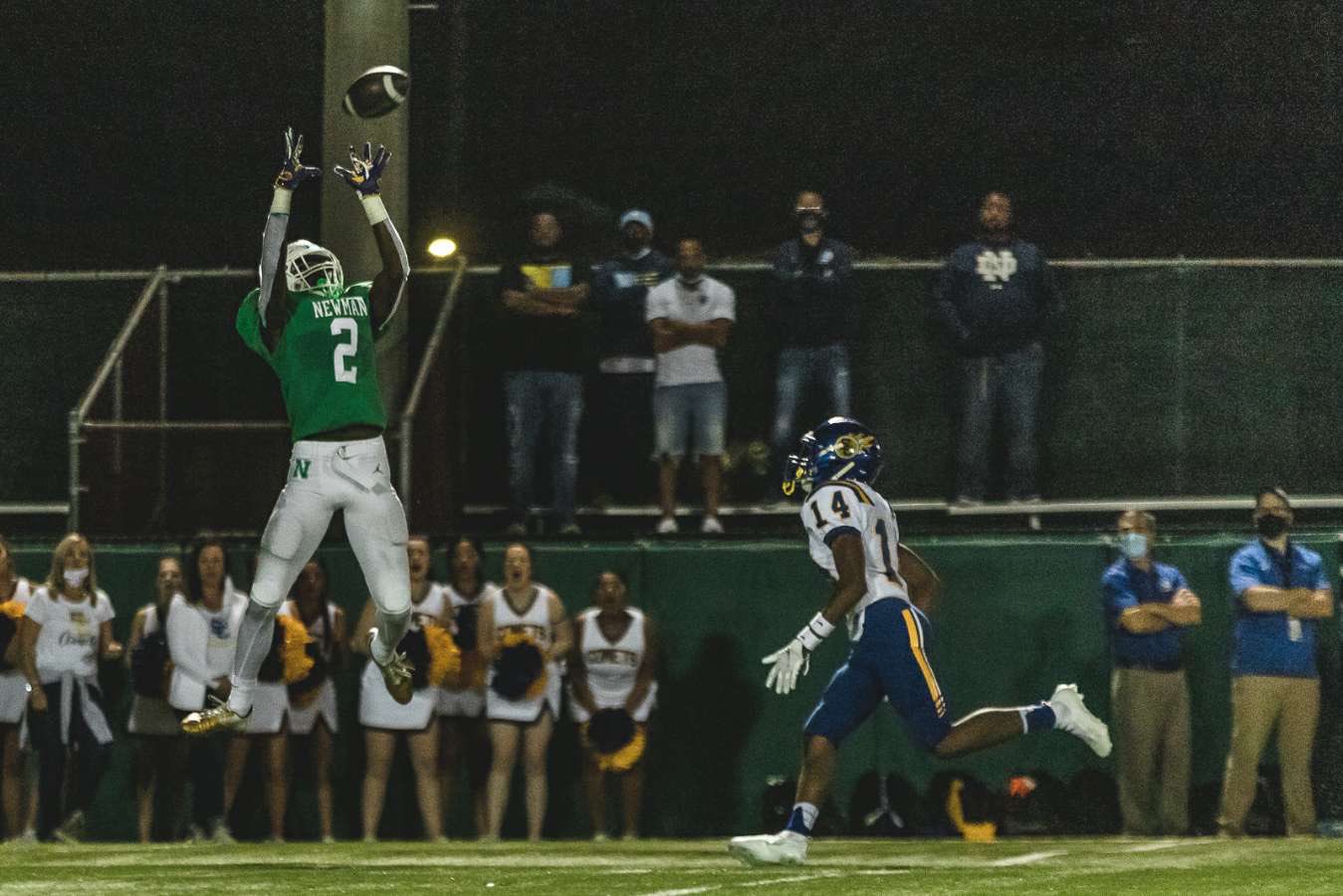
LSU embraced a new decade with its most convincing victory in a national football championship game.
Mighty Clemson, the defending national titlist with a 29-game winning streak, was dispatched in a purple haze of missiles launched in the Superdome by Joe Burrow. The Heisman Trophy winner from Ohio turned Bayou country folk hero riddled the country’s most vaunted defense for 463 yards and five touchdowns.
It was another night of wonder as Burrow closed his two-season chapter at LSU with a 42-25 triumph over the Tigers from the other Death Valley. The visitors were led by a quarterback who signed with Clemson two years ago as the most recruited prep player in history. Twenty-year-old Trevor Lawrence lost for the first time as a collegian, but he appears to be developing into next year’s first pick in the first round of the NFL draft.
That distinction in 2020 will go to LSU’s main man, who at 23 is the same age as four-year NBA veteran Ben Simmons. The Tiger quarterback was a man among kids from start to finish this season under the tutelage of offensive wizards from different worlds, Steve Ensminger and Joe Brady.
Next year, Burrow and Brady will be gone, yet enthusiasm abounds that Myles Brennan will be a close replica to his predecessor. Just off campus, motor mouth chef Marcus “Frenchie Cox” delivered the motto for next season with the omelets and hash browns offered at Louie’s Café: “So long Joe, and Myles to go.”
No future quarterback at LSU will throw for 60 touchdowns in a season. Burrow’s spectacular numbers are a one-time, big-boom spectacle. The cartoonish output was incredibly fun for 15 games with stories to survive past the last words of those who saw it happen. Just as Billy Cannon’s run remains relevant 60 years removed from Halloween of 1959, Burrow’s superman season will have similar staying power.
Great expectations now follow Edward James Orgeron, who is no longer a journeyman underdog who enthralled a nation weary of the Tuscaloosa trend of ruling the SEC. Six-time heavyweight champ Nick Saban has noted that the encore is the hardest achievement. Coach O defied odds to conquer all comers at 58. Perhaps he’ll do it again.
The winds of fate are fickle in and out of the arena, and the campus that Huey Long built not only features the oldest human structures in the Western Hemisphere in the Indian Mounds, it is populated with ghosts of athletic warriors who toiled there. Forty years ago when Coach Bo Rein was lost at sea in a plane crash, former Board member Jerry McKernan referred to LSU as “Twilight Zone on the bayou.”
The gods smiled on the Ole War Skule with Burrow‘s arrival after bizarre deaths of previous Tiger quarterbacks Butch Duhe, Pat Screen, Carl Otis Trimble, Trey Prather, Mike Miley and David Woodley.
As LSU occupies college football penthouse, it is natural to reflect on turning points in 40 years of Tiger lore.
2015: Les Miles is nearly a goner after losing three straight conference games, but is retained after a win over Texas A&M that keeps Jimbo Fisher at Florida State and Ed Orgeron on the staff of Miles. If The Hat is fired, Fisher is the coach and Orgeron is on the outside looking in. As it turned out, Leslie Edwin Miles lasted just four games into 2016, and Coach O emerged from placeholder to national treasure in four years.
2005: Nick Saban leaves LSU for the Miami Dolphins, and Skip Bertman plucks Les Miles from Oklahoma State to direct the Bengals. If Saban had left one week earlier, Steve Spurrier would have been the LSU coach and possibly would have won more than a single national championship.
2000: Nick Saban is hired by Joe Dean and Mark Emmert mainly because he is the only established coach interested in taking an LSU job that lost its luster amid eight of the last eleven seasons being losers. Dean offered the post to Butch Davis of Miami of Florida in a clandestine airport meeting, and Davis laughed at the thought of departing Coral Gables for Baton Rouge. Saban arrived, became an icon, and we know the rest of the story with Nick wearing crimson and Tiger fans raging in similar hue against him to the point of burning him in effigy in 2008 at Tiger Manor Apartments. And that was before five national crowns at Tuscaloosa.
1995: Gerry DiNardo loses 65-0 nothing to Tennessee in his fourth season finale at Vanderbilt and is promoted to LSU coach because TCU’s Pat Sullivan, who briefly was named the Tiger leader, returns to Fort Worth when he lacks funds to pay off his buyout with the Horned Frogs. Dean secretly wanted DiNardo from the start and for three years, the union was a stroke of brilliance with LSU going 26-9-1 after six consecutive losing seasons. DiNardo stumbled to a 6-15 record in 1998-99 ushering in the 21st Century with a new football boss who started the Golden Age of LSU football.
1990: After two losing seasons, 37-year-old Mike Archer is canned and LSU opts to hire 43-year-old Hudson Curley Hallman, who appeared to be a genius in three years at Southern Miss where his Golden Eagles won 23 games, beating Alabama, Auburn and Florida State. It was Dallas Cowboys’ scout Gil Brandt who urged Joe Dean to “Hire Curley Hallman and never look back.” Brandt and Dean learned quickly that USM achieved uncommon success more to the skills of quarterback Brett Favre than from its folksy coach, who posted a disastrous 16-28 mark in four years.
1980: Bo Rein is selected by Athletic Director Paul Dietzel to replace 18-year veteran Charles McClendon. Rein left North Carolina State at 34 after Florida State’s Bobby Bowden rejected an offer from his close friend. Dietzel lost his coach 42 days into his tenure when a small plane occupied by Rein and pilot Lewis Benscotter crashed into the Atlantic Ocean several hours after the start of a scheduled 40-minute flight from Shreveport to Baton Rouge.
Jerry Stovall was hired two days after Rein’s death. The 1962 Heisman runner-up had two good and two bad seasons, ending with a 4-7 debacle in 1983 which cost him his gig. Stovall had been named NCAA Coach of the Year in 1982 and does warrant plaudits for his vision for LSU football. Stovall brought an analytical approach to recruiting, was a visionary on the coming age of beefy linemen and preferred elusive scatbacks to statuesque sprinters. Stovall noted that short guys are quicker and opted to go with 5’8 Dalton Hilliard at tailback, moving the regal Eric Martin to wide receiver. Both ended up starring forthe New Orleans Saints at positions chosen for them by their college coach.
The Stovall legacy was embodied by Clyde Edwards-Helaire, who in 2019 produced one of the best seasons for an LSU running back. In a normal year, the Baton Rouge Catholic product would have been touted as a Heisman hopeful, but that oxygen was stifled in Burrow’s high-octane passing frenzy. LSU also fielded a roster with 24 players above 285 pounds, the new norm for superpowers of the game.





Be the first to comment